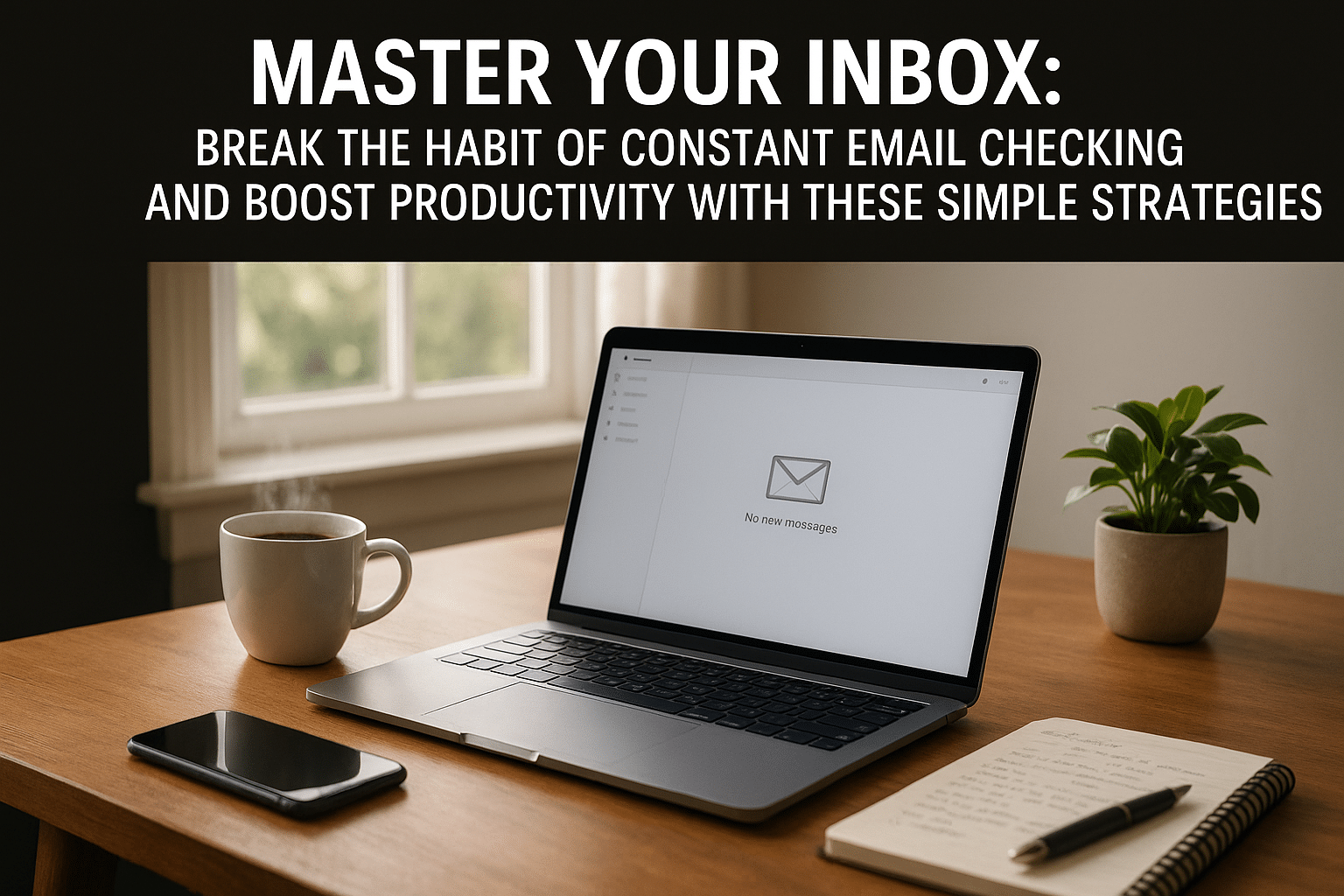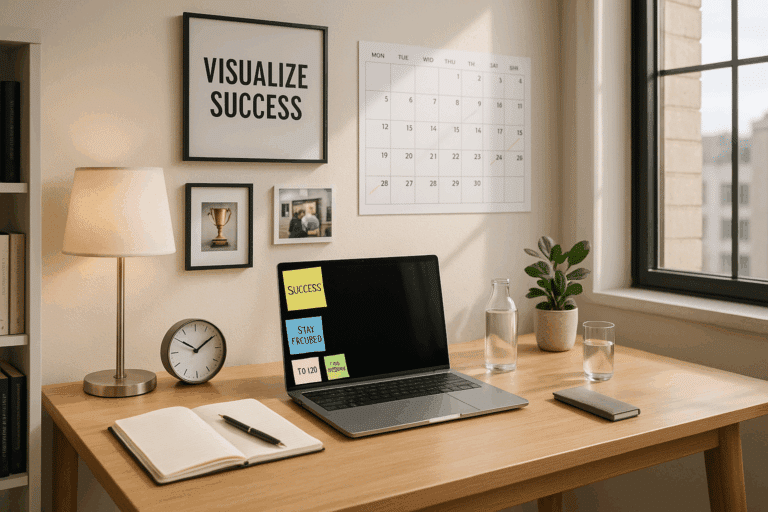Imagine a scenario where your productivity graph is soaring high, your task checklist is consistently being ticked off, and your inbox is no longer a fearsome battleground. Sounds unreal, doesn’t it? But here’s the catch – it’s entirely possible! You can master your inbox and break the habit of constant email checking to give your productivity an enormous boost. And this article is your roadmap to that goal. 😎
Let’s admit it – emails are a critical part of our professional lives. Yet, they can often seem like a relentless adversary, eating away our valuable time and attention. According to a study by McKinsey, professionals spend about 28% of their work week managing emails. That’s almost one-third of your productive time gone, just to emails! 😱
But don’t despair just yet. There are proven strategies and best practices that can help you regain control of your inbox and, consequently, your time. The following article will be a comprehensive guide, packed with simple yet effective techniques that will help you to transform your relationship with your inbox and enhance your productivity.
Before we delve into the nitty-gritty, it’s important to note that our aim isn’t to reach ‘inbox zero’ – a notion that is often misinterpreted. Contrary to popular belief, the goal isn’t to have an empty inbox, but rather to have a managed one, where you know exactly what each email is about and how it needs to be dealt with. 🎯
We’ll start off by understanding the psychology behind our compulsive email checking habit. Next, we’ll look into some practical methods to manage incoming emails effectively. We’ll also explore how to draft emails that get quick responses, so you can avoid endless back-and-forth correspondences. Lastly, we’ll talk about some advanced strategies that can help you maintain a lean, mean, productivity-enhancing inbox.
While the overall focus is on boosting productivity, we will not overlook the importance of well-being. We will discuss how an organized inbox can reduce stress, provide mental clarity, and improve your overall work-life balance. Because at the end of the day, productivity should not come at the cost of your peace of mind. 🙏
So, are you ready to make the daunting world of emails your new productive playground? Whether you’re an email novice feeling overwhelmed with your overflowing inbox, or an experienced professional looking for ways to streamline your email management, this article will equip you with the tools you need to master your inbox and elevate your productivity.
Let’s start this journey towards a clutter-free inbox, enhanced productivity, and, ultimately, a balanced professional life. Stick with me, and together, we’ll demystify the art of mastering your inbox. 💪
So, fasten your seatbelts, as we embark on this transformative journey. Let’s break the habit of constant email checking and create an inbox that works for you, not against you. It’s time to claim back your time, reclaim your productivity, and master your inbox, once and for all. 🚀
Mastering Your Inbox: The Art of Email Management
In the era of digital communication, email has become a quintessential tool for both personal and professional correspondence. However, for many, it has turned into a time-consuming burden, sucking up hours that could be otherwise spent on productive tasks. With constant notifications and an ever-growing inbox, it is easy to fall into the habit of incessant email checking. But fear not, there are simple strategies you can adopt to break this habit and boost your productivity. In this article, we will delve into these techniques and provide tips to help you take control of your inbox.
Before we begin, let’s understand the impact of this incessant email checking. A study by the University of California, Irvine, found that the average office worker checks their email 74 times a day. The same study showed that it takes an average of 23 minutes and 15 seconds to fully recover your concentration after a trivial interruption, such as checking an email. That’s a lot of wasted time and decreased productivity!
As a solution, we recommend the ‘Inbox Zero’ approach. This strategy, developed by productivity expert Merlin Mann, advocates the idea of keeping your email inbox empty (or almost empty) at all times. Achieving Inbox Zero may sound daunting, but it’s quite feasible when you employ the right tactics, as we’ll explore further.
Step 1: Prioritize Your Emails
Not all emails are created equal. Some require your immediate attention, while others can wait. The first step towards mastering your inbox is understanding this difference and prioritizing your emails accordingly. For instance, you could categorize your emails into ‘Important and Urgent’, ‘Important but Not Urgent’, ‘Not Important but Urgent’, and ‘Not Important and Not Urgent’. This method is known as the Eisenhower Matrix, named after the 34th President of the United States, Dwight D. Eisenhower.
To illustrate this method, consider this table below:
| Important | Not Important | |
|---|---|---|
| Urgent | Respond to client’s proposal | Office party invitation |
| Not Urgent | Planning next quarter’s budget | Reading industry news |
By categorizing your emails in this way, you’ll quickly see where your attention should be directed and where it’s not needed, allowing you to process your inbox more efficiently.
Step 2: Set Specific Times for Checking Emails
To break the habit of constant email checking, it’s essential to allocate specific times during your day for this task. Instead of letting incoming emails interrupt your workflow, schedule dedicated ’email times’. For example, you could check your emails first thing in the morning, before lunch, and at the end of the workday. This strategy helps maintain focus on your primary tasks without the constant disruption of email notifications.
In a similar vein, it’s also beneficial to turn off email notifications. Studies show that these constant pings and pop-ups significantly decrease productivity and increase stress levels. So do yourself a favor and disable them. Trust in your designated ’email times’ to keep you up-to-date.
For more insights on setting specific times for email checking, watch this informative video by Thomas Frank, “How to Stop Procrastinating & Get Work Done | Productivity Tips & Hacks” on his YouTube channel.
Step 3: Leverage Email Management Tools
In the world of technology, there’s no shortage of tools and apps designed to help manage your inbox. From automated filters and folders to AI-based assistants, these tools can drastically reduce the time spent on email management. Here are a few you might find helpful:
- Boomerang: This is a plugin for Gmail and Outlook that lets you schedule emails to be sent later, reminds you to follow up on emails if you don’t get a response, and even pauses incoming emails to prevent distractions.
- SaneBox: This tool uses artificial intelligence to filter unimportant emails out of your inbox, allowing you to focus on messages that matter.
- Spark: This app automatically categorizes your emails, making it easier for you to find important messages and deal with them accordingly.
Using these tools, you can automate a significant part of your email management process, freeing up your time for more productive endeavors.
In conclusion, managing your inbox need not be an overwhelming task. By prioritizing your emails, scheduling specific times for email checking, and leveraging the right tools, you can transform your inbox from a source of stress into a tool for productivity. Remember, the goal is not to eliminate emails but to control them. Happy emailing!

Conclusion
In wrapping up this comprehensive and in-depth exploration of software engineering, it’s important to highlight the critical concepts and insights that we have unraveled. Through the journey of the article, we have discovered the inner workings of this complex field, shedding light on the intricate aspects that are often overlooked but crucial to its functioning.
Throughout the discourse, we have examined the core principles of software engineering, the various methodologies utilized in the development processes, and the significant role of testing in ensuring the efficiency and effectiveness of software systems. The discussion also extended to encompass the crucial factors of software maintenance and the imperative need for continuous learning and upgrading skills in this ever-evolving industry. 🔄
The field of software engineering, as we have explored, is not just about coding but involves a whole gamut of activities including problem-solving, designing, testing, and maintaining systems. This not only makes the field challenging and interesting but also places a high degree of responsibility on software engineers. The information presented in this article seeks to provide a holistic view of the field, presenting a clear picture of what software engineering entails. 🖥️
Another key takeaway from this discourse is the importance of being adaptable in this dynamic field. With technological advancements happening at a rapid pace, it is crucial for software engineers to stay updated with the latest trends and developments. This is not only vital for their personal growth but also for the successful execution of projects.💡
In the context of today’s technology-driven world, the importance of software engineering cannot be understated. It is the backbone of various industries, driving innovation and transformation. By understanding the nuances of software engineering, one can truly appreciate the immense efforts behind the seamless functioning of the systems we often take for granted.
We hope that this article has sparked your interest in the world of software engineering. If you have found it informative and insightful, please feel free to share your thoughts in the comments section, or share the article with your peers. We also encourage you to apply the knowledge gained through this article in your professional endeavors. 🚀
Remember, the key to success in this field is continuous learning. So, keep exploring, keep learning, and keep innovating. The world of software engineering awaits you!
For further reading on this subject, you might find the following resources useful:
– IEEE Software Engineering Standards (Link)
– Association for Computing Machinery (Link)
– International Software Testing Qualifications Board (Link)
– Software Engineering Institute at Carnegie Mellon University (Link)
🔗 Please note, all these links are still active and contain a wealth of information on various aspects of software engineering.
In closing, I would like to express my sincere gratitude for your time and engagement in reading this article. I hope it has been beneficial to you and I look forward to your continued interest in future articles. Happy learning and exploring! 🌐💻
Tags: #SoftwareEngineering #Coding #SoftwareDevelopment #SoftwareTesting #SoftwareMaintenance



